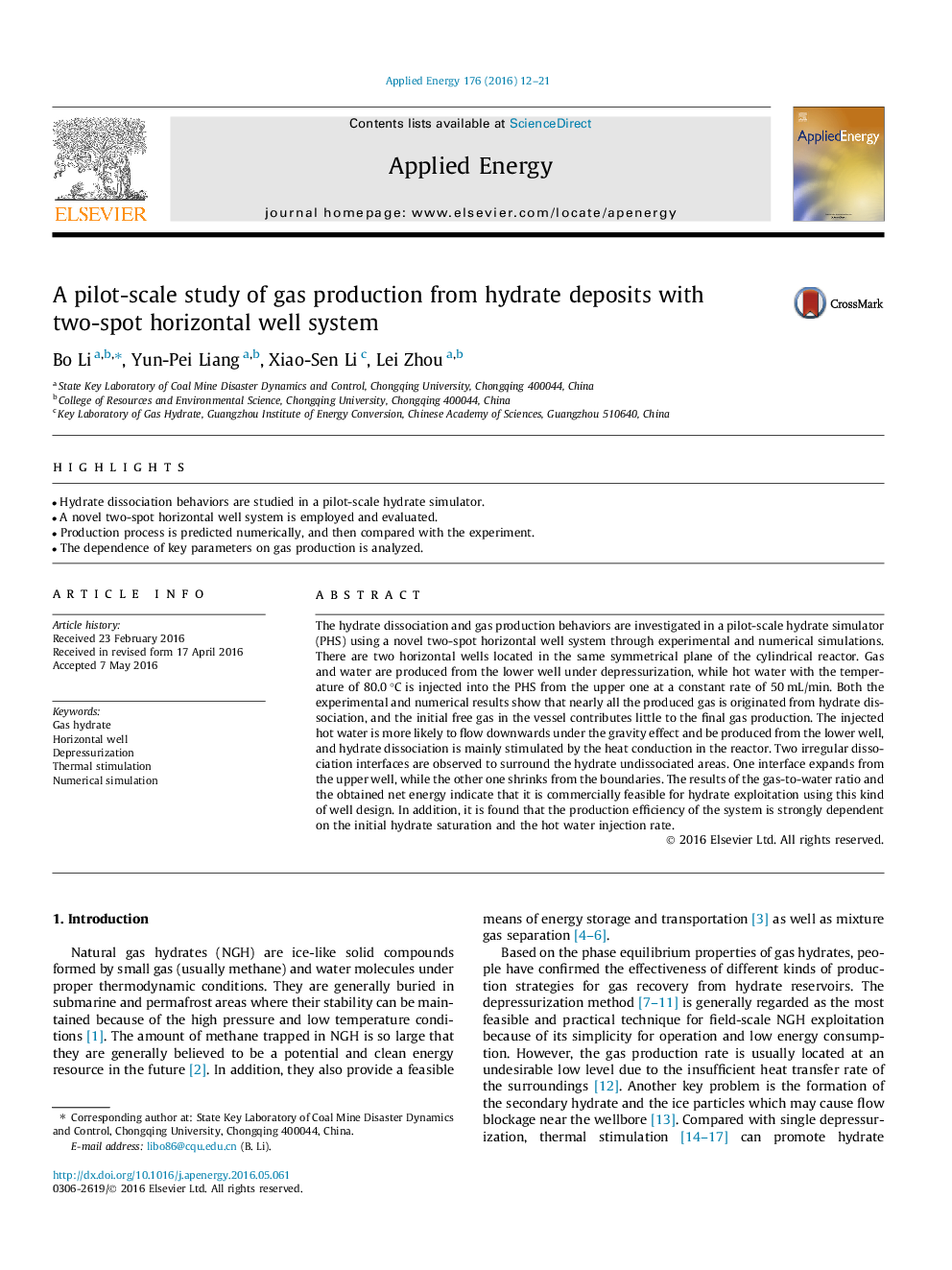| Article ID | Journal | Published Year | Pages | File Type |
|---|---|---|---|---|
| 6682858 | Applied Energy | 2016 | 10 Pages |
Abstract
The hydrate dissociation and gas production behaviors are investigated in a pilot-scale hydrate simulator (PHS) using a novel two-spot horizontal well system through experimental and numerical simulations. There are two horizontal wells located in the same symmetrical plane of the cylindrical reactor. Gas and water are produced from the lower well under depressurization, while hot water with the temperature of 80.0 °C is injected into the PHS from the upper one at a constant rate of 50 mL/min. Both the experimental and numerical results show that nearly all the produced gas is originated from hydrate dissociation, and the initial free gas in the vessel contributes little to the final gas production. The injected hot water is more likely to flow downwards under the gravity effect and be produced from the lower well, and hydrate dissociation is mainly stimulated by the heat conduction in the reactor. Two irregular dissociation interfaces are observed to surround the hydrate undissociated areas. One interface expands from the upper well, while the other one shrinks from the boundaries. The results of the gas-to-water ratio and the obtained net energy indicate that it is commercially feasible for hydrate exploitation using this kind of well design. In addition, it is found that the production efficiency of the system is strongly dependent on the initial hydrate saturation and the hot water injection rate.
Related Topics
Physical Sciences and Engineering
Energy
Energy Engineering and Power Technology
Authors
Bo Li, Yun-Pei Liang, Xiao-Sen Li, Lei Zhou,
